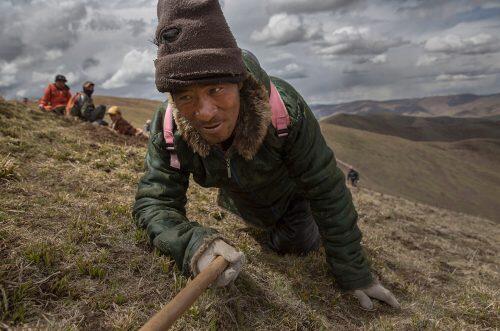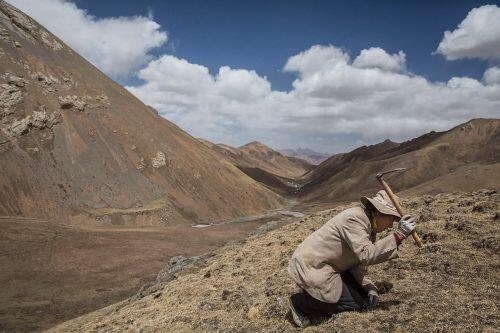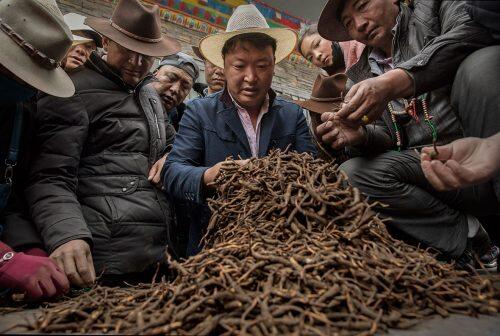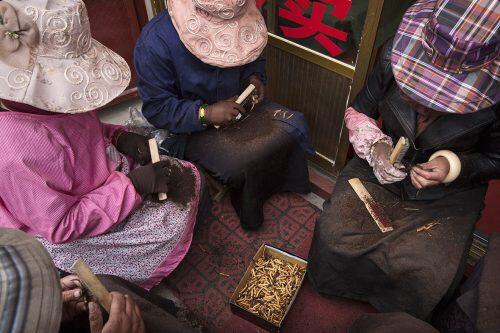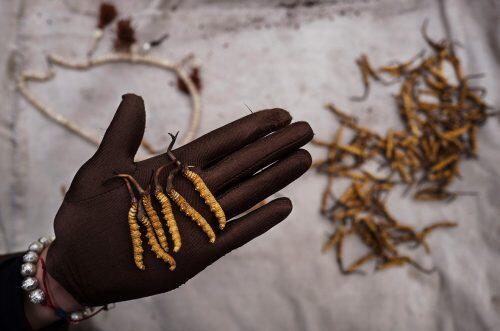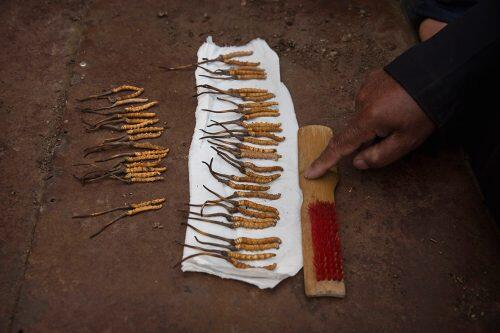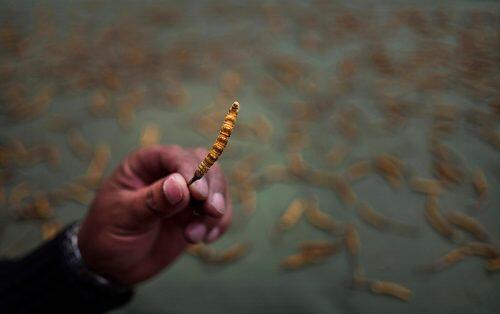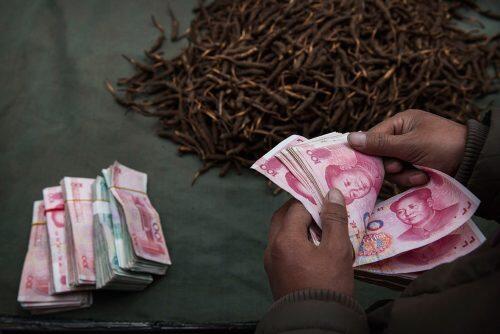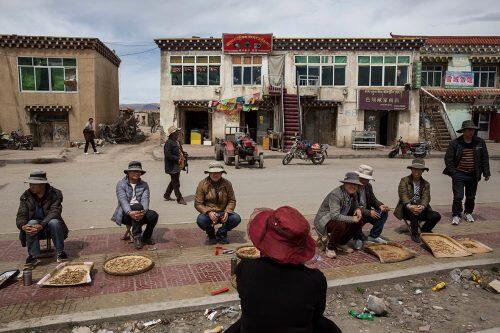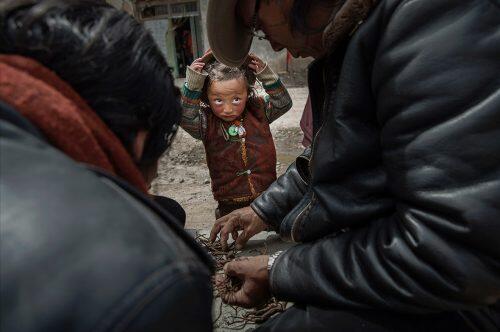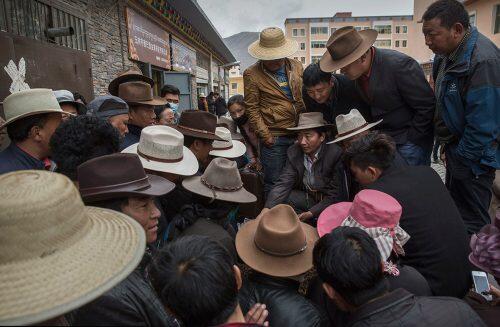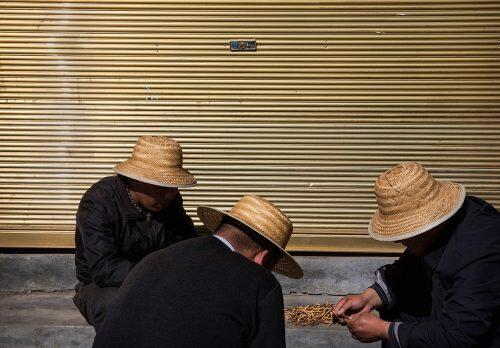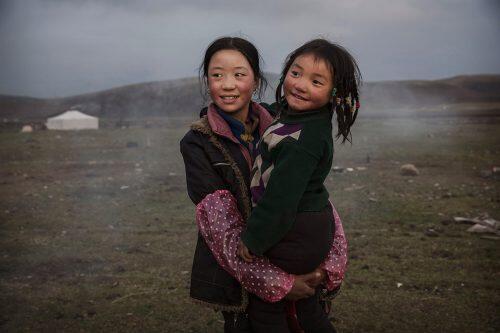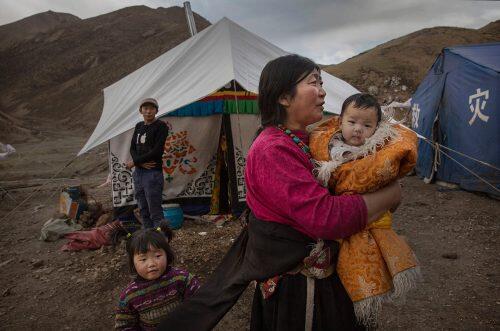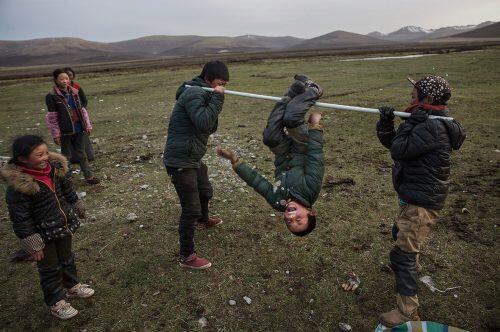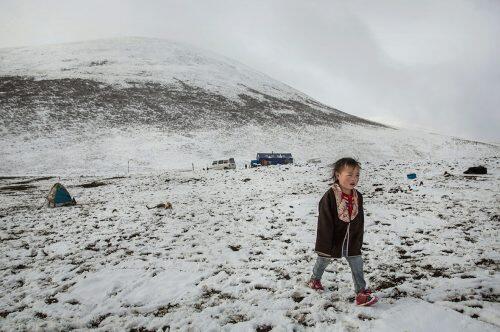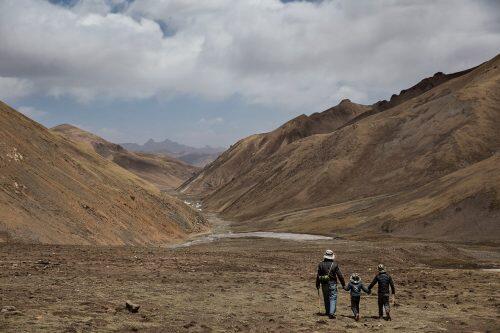High up in the mountains of the Tibetan plateau, nomads crawl on their hands and knees searching for a rather gruesome, but very valuable, parasitical fungus.Ophiocordyceps sinensis germinates in living moth larvae, killing and mummifying them, and then growing a stalk-like fruiting body out of its head.
Commonly known as caterpillar fungus, it is prized in traditional Chinese and Tibetan medicine. The fungus can supposedly be used to treat a wide range of ailments, including asthma, cancer and erectile dysfunction. It is considered as having a balance of yin and yang as it is apparently both animal and vegetable.
Award-winning Getty Images photojournalist Kevin Frayer travelled to the Tibetan Plateau to document the search for the caterpillar fungus.
Tibetan nomads crawl on their knees on a hillside at high altitude as they search for cordycep fungusKevin Frayer/Getty Images
A Tibetan nomad crawls while harvesting cordycep fungus near Sershul on the Tibetan PlateauKevin Frayer/Getty Images
A Tibetan nomad swings a pick as he searches for cordycep fungus at high altitude on the Tibetan PlateauKevin Frayer/Getty Images
Tibetan nomads and traders examine cordycep fungus for sale at a market in YushuKevin Frayer/Getty Images
Tibetan nomad women clean cordycep fungus at a market in Yushu on the Tibetan PlateauKevin Frayer/Getty Images
A Tibetan woman displays high quality cordycep fungus at a market in Yushu on the Tibetan PlateauKevin Frayer/Getty Images
A Tibetan nomad lays out his cleaned cordycep fungus for sale at a market in SershulKevin Frayer/Getty Images
A Tibetan inspects high quality cordycep fungus at a market in YushuKevin Frayer/Getty Images
Frayer told IBTimes UK: “I have travelled often to the Tibetan plateau but this was the first time I was able to see the cordyceps harvest. It’s such a short season yet so crucial to the local economy for Tibetans. It’s not a traditional way of life for them and a somewhat recent phenomenon fuelled by outrageous demand as a medicine in China. Even though the value of cordyceps is declining a bit, the local people can make enough money for the entire year.”
He added: “The harvesting happens at altitudes mostly above 4,500m. The most valuable cordyceps are often in the most arduous places to reach and it’s not easy.” Environmentalists increasingly warn that overharvesting of caterpillar fungus carries the cost of degradation to mountain grasslands that are essential for yak and cattle grazing.
The demand has created a booming economy for what Tibetans call yartsa gunbu, or summer grass, winter worm (ie, it is a worm in winter and a grass in summer). Top quality, large caterpillar fungus can sell for around $10 (£7) each, or £35,000 per pound. Tibetans who rely primarily on farming and herding have turned to the weeks-long harvest as a means of earning income to last through the year. The annual gold rush has transformed parts of rural Tibetan areas, generating about 40% of the local economy.
A Tibetan nomad laughs as vendors buy and sell cordycep fungus at a market in SershulKevin Frayer/Getty Images
A Tibetan nomad counts money after selling his cordycep fungus at a market in YushuKevin Frayer/Getty Images
A Tibetan nomad counts money after selling his cordycep fungus at a market in YushuKevin Frayer/Getty Images
A Tibetan nomad boy watches as vendors buy and sell cordycep fungus at a market in SershulKevin Frayer/Getty Images
Traders and Tibetan nomads crowd around as they bid on cordycep fungus for sale at a market in YushuKevin Frayer/Getty Images
Chinese traders examine and sort cordycep fungus at a marketKevin Frayer/Getty Images
A young Tibetan nomad girl holds her sister at a temporary camp for cordycep fungus pickers near SershulKevin Frayer/Getty Images
A Tibetan woman holds a baby as she stands outside a tent at a temporary camp for cordycep pickers near Zadoi in the Yushu Tibetan Autonomous PrefectureKevin Frayer/Getty Images
A young Tibetan nomad girl rests on a motorcycle at a temporary camp for cordycep fungus pickers near SershulKevin Frayer/Getty Images
Tibetan nomads play after a day of working at a temporary camp for picking cordycep fungusKevin Frayer/Getty Images
A young Tibetan child from a poor family sits in a tent at a temporary camp for cordycep pickers near ZadoiKevin Frayer/Getty Images
A Tibetan nomad child walks at a temporary camp for cordycep harvesters near Sershul after a fresh snowfallKevin Frayer/Getty Images
A Tibetan man walks with his sons at high altitude after picking cordycep fungus near ZadoiKevin Frayer/Getty Images
Source: IB TIMES (David Sim).




